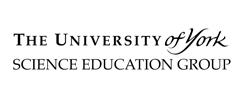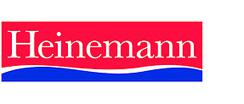- View more resources from this publisher
 University of York Science Education Group (UYSEG)
University of York Science Education Group (UYSEG)
Food for thought: food supplies
A Year Ten module from the Salters’ double award science course. A text activity on world food supplies introduces a series of experiments on photosynthesis and the role of chlorophyll. Experiments on the effects of nutrient deficiency leads to consideration of the use of fertilisers.
Preparation of nitrogen leads to discussion of the Haber process for fixing nitrogen and ideas about reversible reactions. Practical work to prepare an ammonium salt leads to calculations of reacting masses from balanced equations, and discussions of manufacturing routes to fertilisers.
The effects of using fertilisers on soil pH, and problems such as eutrophication associated with leaching into groundwater are considered. A design exercise introduces the importance of reducing food losses both in production and storage and compares use of insecticides with biological control.
Practical work on browning of apples, extraction of apple-juice and manufacture of soft-centred chocolates introduces the properties of enzymes. The use of yeast as a raising agent is tested. The difference between fats and oils is demonstrated and linked to the unsaturated molecular structure of alkenes.
Finally, a discussion exercise on agricultural policy for a small country draws together ideas from the module.
Section1: Feeding the plants that feed us
A text activity on World food supplies introduces a series of experiments on photosynthesis and the role of chlorophyll. Experiments on the effects of nutrient deficiency lead to consideration of the use of fertilisers.
Section 2: Artificial fertilisers
Preparation of nitrogen leads to discussion of the Haber process for fixing nitrogen and ideas about reversible reactions. Practical work to prepare an ammonium salt leads to calculations of reacting masses and discussions of manufacturing routes to fertilizers.
Section 3: Fertilisers and other chemicals on the farm
The effects of using fertilisers on soil pH, and problems associated with leaching into groundwater are considered. A design exercise introduces the importance of reducing food losses both in production and storage and compares use of insecticides with biological control.
Section 4: Making changes in food
Practical work on browning of apples, extraction of apple-juice and manufacture of soft-centred chocolates introduces the properties of enzymes. The use of yeast as a raising agent is tested. The difference between fats and oils is demonstrated and linked to their molecular structure.
Section 5: Can we feed the World?
A discussion exercise on agricultural policy for a small country draws together ideas from the module.
Show health and safety information
Please be aware that resources have been published on the website in the form that they were originally supplied. This means that procedures reflect general practice and standards applicable at the time resources were produced and cannot be assumed to be acceptable today. Website users are fully responsible for ensuring that any activity, including practical work, which they carry out is in accordance with current regulations related to health and safety and that an appropriate risk assessment has been carried out.
Downloads
-
Food for thought 7.78 MB





